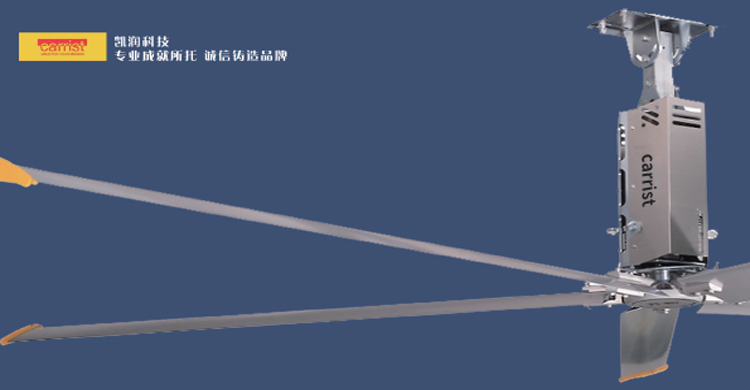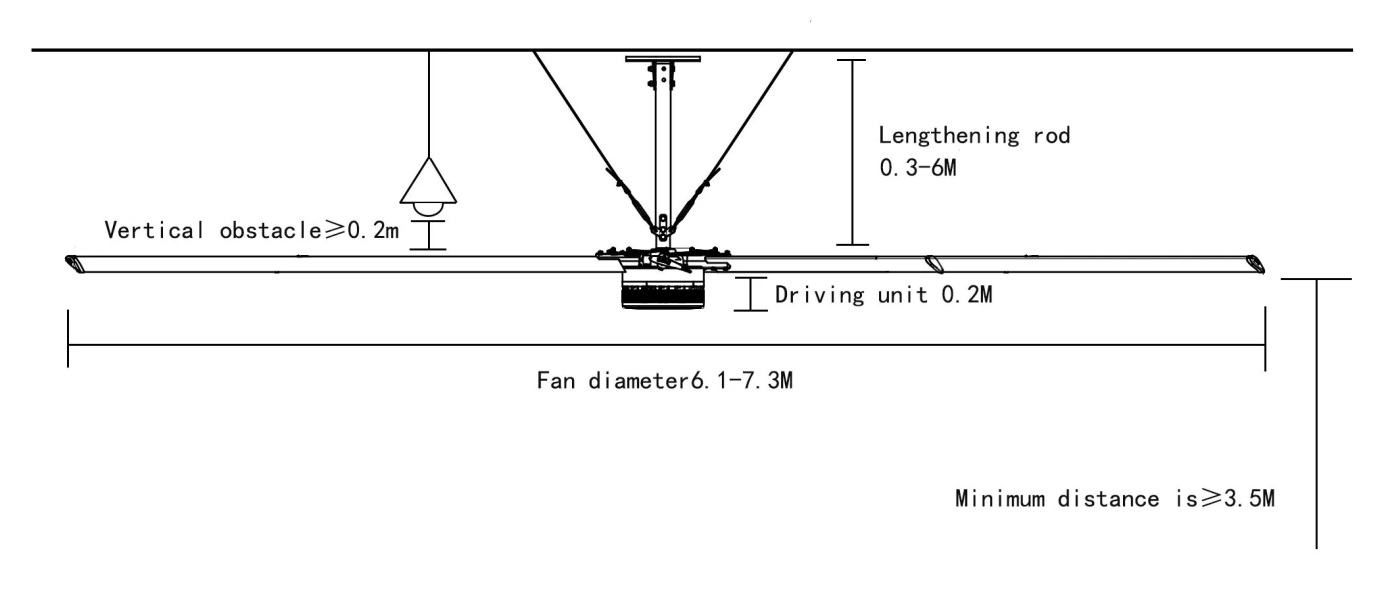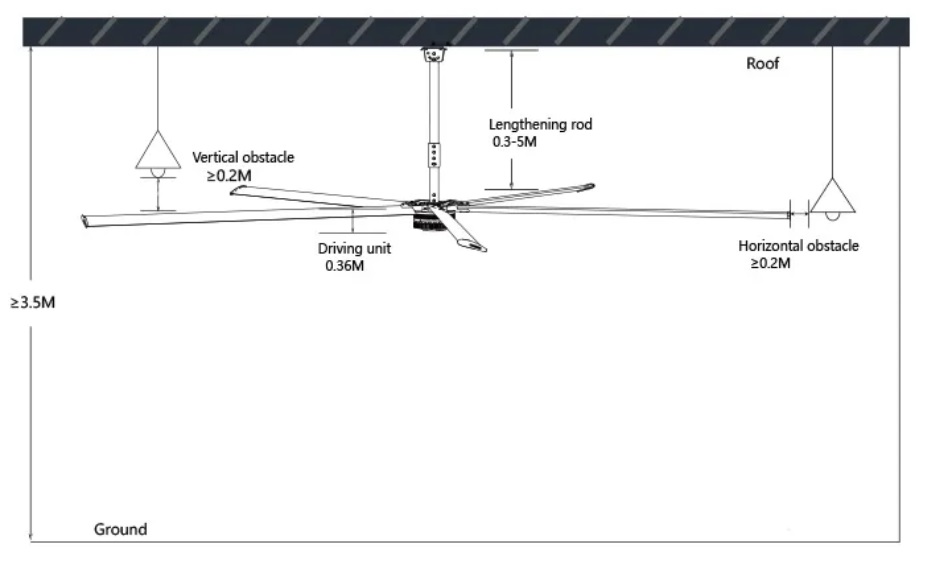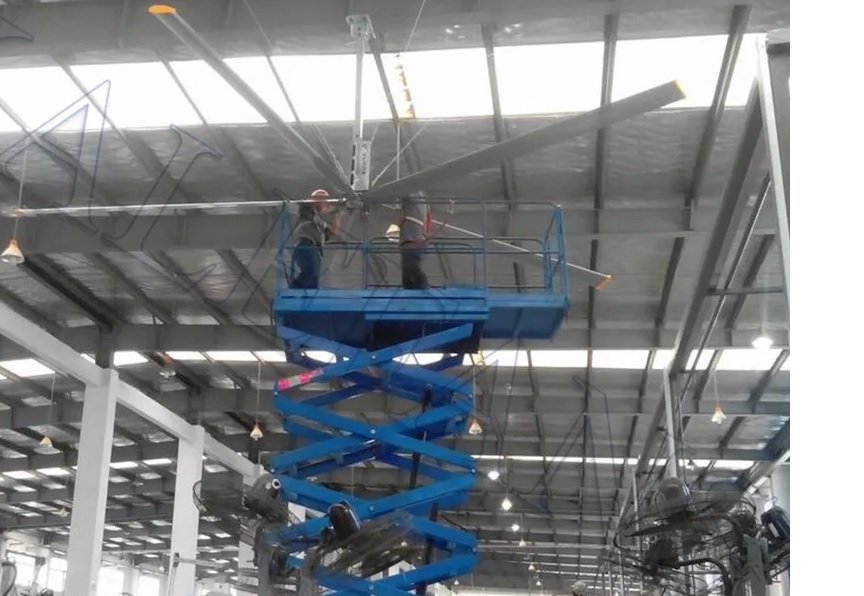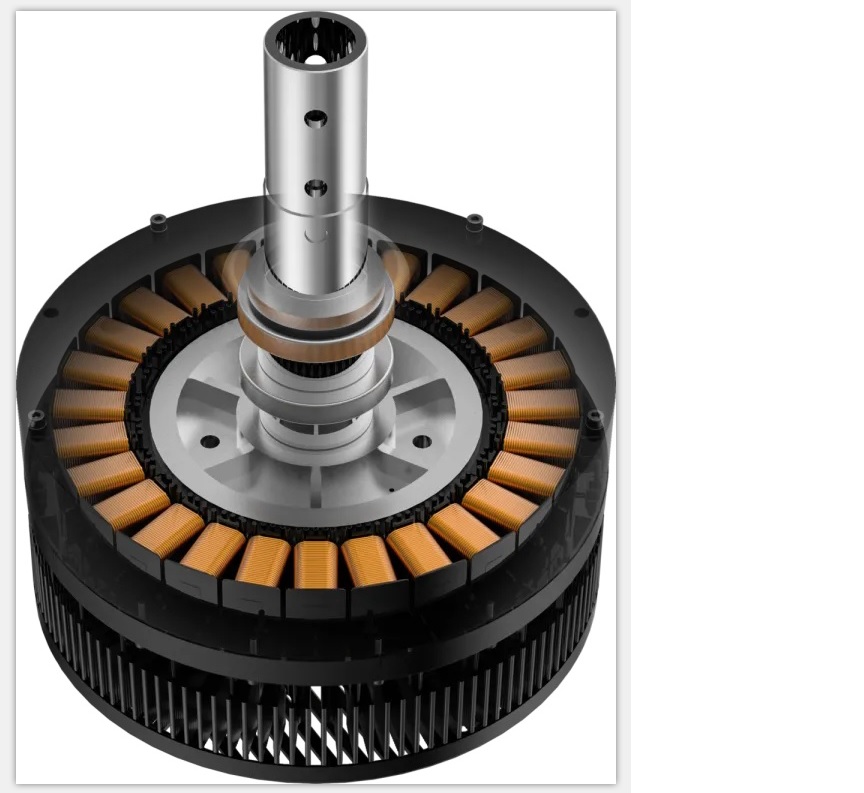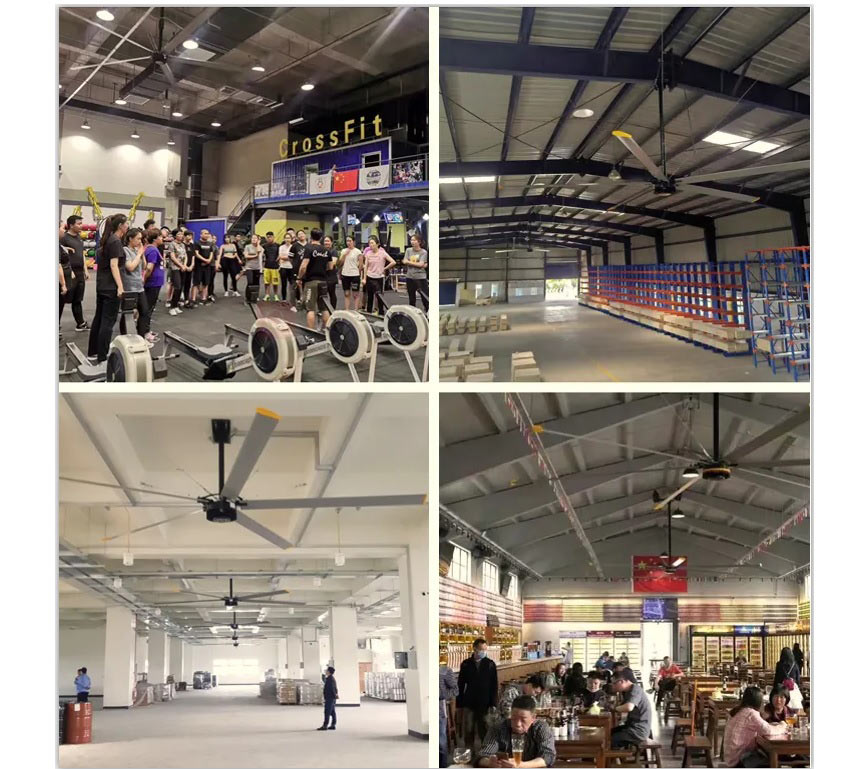HVLS Ceiling Fan
Carrist HVLS (High Volume Low-Speed) Ceiling Fans offer several advantages over traditional high-speed ceiling fans or multiple smaller fans. Here are some of the key advantages of HVLS ceiling fans:
High Efficiency: HVLS fans consume less energy compared to multiple smaller fans or traditional high-speed fans. They have larger blades and run at a slower speed, producing more air movement with less energy.
Increased Comfort: HVLS fans create a gentle breeze in a room, reducing stagnant air and improving air quality. This helps to make people feel more comfortable in a room, especially during hot weather.
Covers Large Area: Due to their large size, HVLS fans can cover a much larger area than traditional fans. This means fewer fans are needed to achieve the same cooling effect.
Low Noise: HVLS fans produce less noise compared to traditional high-speed fans. This makes them ideal for use in environments where noise can be a disruption such as offices, libraries, or hospitals.
Reduced Maintenance: HVLS fans require less maintenance than smaller high-speed fans. They have fewer movable parts and are built to last longer, reducing the overall maintenance cost.
Improved Air Circulation: HVLS fans are designed to move large amounts of air at low speed. This improves air circulation and reduces the concentration of pollutants in the air.
Overall, Carrist HVLS ceiling fans are an energy-efficient and cost-effective solution for cooling large open spaces while providing added comfort and improved air quality.
Diameter: Carrist HVLS industrial ceiling fans typically range in size from 8 to 24 feet.
Airflow: The airflows of Carrist HVLS industrial ceiling fan range from 75,000 to 500,000 cubic feet per minute (CFM).
Motor: Typically, an industrial HVLS fan has a motor that ranges in size from 1 to 2 horsepower.
Number of Blades: The number of blades of an industrial HVLS fan can be between five and ten, depending on the size of the fan.
Speed Control: High volume low-speed fans have different speed control options and control systems, including wall-mounted control boxes, touch screen control panels, and remote controls.
Mounting Height: Industrial HVLS ceiling fans can be mounted at different heights, depending on the area they are intended to cool, with a recommended minimum mounting height of 25ft-30ft.
Energy Consumption: HVLS fans consume energy significantly lower than traditional ceiling fans due to their low-speed operation.
Coverage area: HVLS industrial ceiling fans can cover larger areas than traditional fans. They are capable of cooling areas between 1,500–25,000 sqft.

